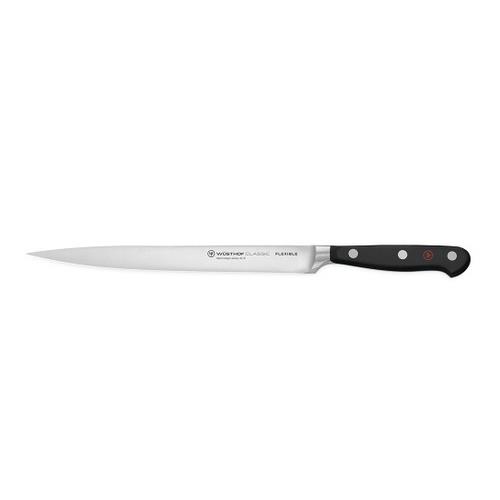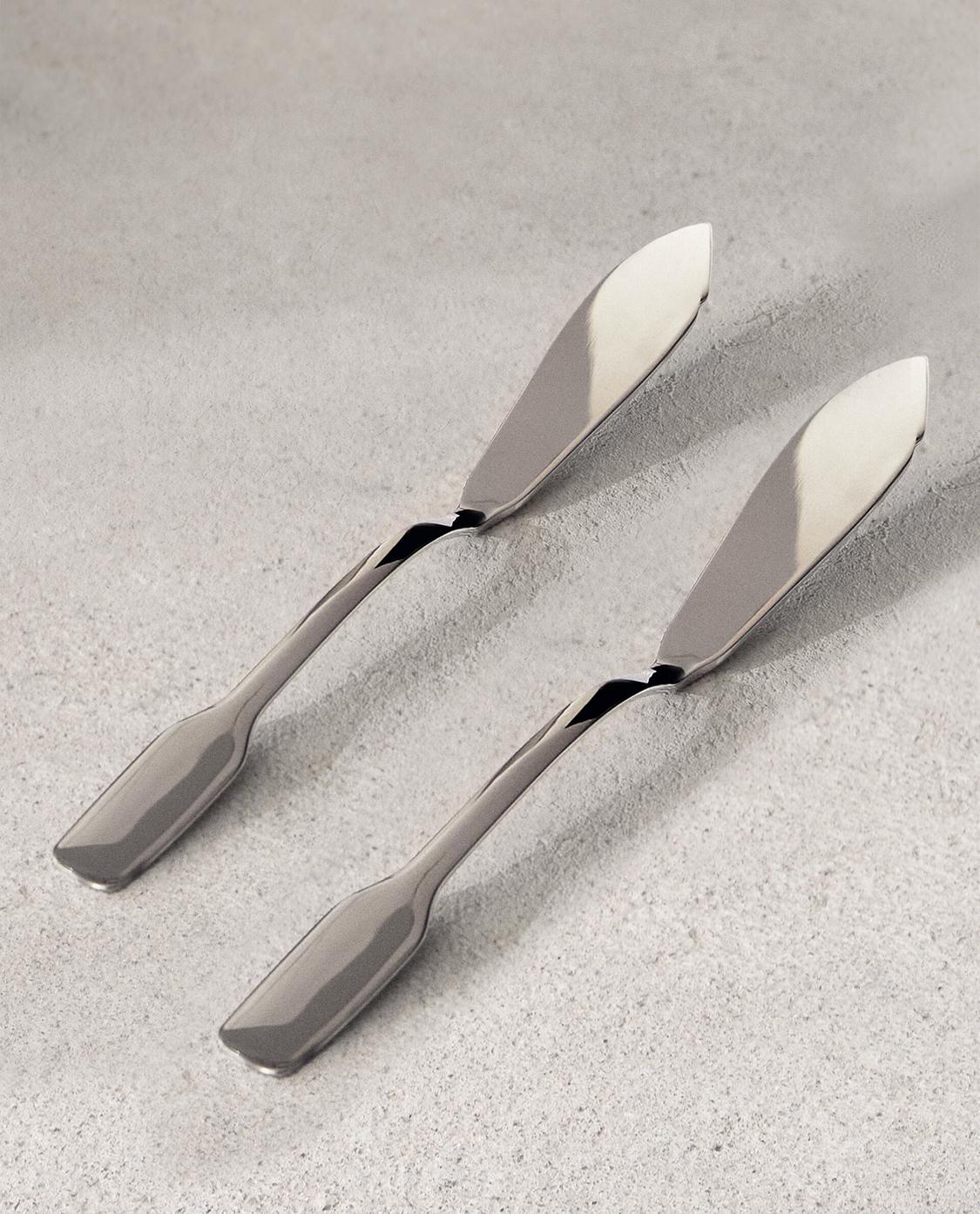The Ultimate Overview to Maintaining Your Fish Knife for Longevity and Performance
Preserving a fish knife is necessary for guaranteeing its longevity and optimal performance. Correct care entails a series of steps, including cleansing, honing, and storage space. Each stage adds to the knife's performance during use. Understanding these techniques can make a substantial distinction in the life-span of this vital tool. Many customers forget crucial elements of upkeep that can lead to degeneration. What are these often-forgotten steps?
Selecting the Right Fish Knife for Your Needs
When choosing the excellent fish knife, what secret features should one take into consideration? The blade's flexibility is vital, permitting accuracy while filleting different fish types (fish knife). A thin, narrow blade usually enhances maneuverability, making it much easier to browse around bones and skin. The material of the blade also plays an essential role; stainless steel uses sturdiness and rust resistance, vital for frequent direct exposure to water
Furthermore, the take care of's design must not be ignored. It must provide a comfortable grasp, preferably featuring non-slip materials that ensure security during usage. The knife's length is one more element; shorter blades can supply much better control, while longer blades may be useful for larger fish. Ultimately, weight is very important; a well-balanced knife permits prolonged use without exhaustion. By thoroughly taking into consideration these features, one can select a fish knife that meets particular demands for reliable fish prep work.
Correct Cleaning Techniques After Each Usage
Proper cleaning methods after each usage are important for keeping the long life and performance of a fish knife. Immediately after filleting fish, it is vital to wash the knife under warm water to eliminate scales, scum, and any type of recurring fish juices. Using a soft sponge or cloth, the customer must delicately scrub the blade and manage, paying unique interest to any holes where debris may collect. Avoid using rough products that can damage the blade's surface. After cleaning, the knife ought to be extensively dried with a clean towel to prevent moisture-related damage. Using a food-safe mineral oil regularly can aid preserve its integrity if the knife has a wood deal with. Keeping the knife in an assigned sheath or magnetic strip can further safeguard it from accidental damage and ensure it stays prepared and tidy for future usage. Regular adherence to these cleansing practices will certainly enhance the knife's life-span and effectiveness.
Sharpening Your Fish Knife: Approaches and devices
Sharpening a fish knife is a vital procedure that improves its performance and ensures clean cuts while filleting. To attain ideal intensity, a number of tools can be used. A whetstone is thought about one of the most efficient techniques, enabling accurate control over the honing angle. Users must wet the stone and maintain a consistent 20-degree angle while gliding the blade across its surface area.
Alternatively, a developing pole can be made use of for regular upkeep, straightening the blade's side without removing material. For comfort, electric sharpeners provide a quick solution, though they might not offer the very same degree of skill as hand-operated approaches.
Despite the selected technique, it is necessary to do with a leather strop to polish the edge, guaranteeing a lancinating finish. Normal developing not only prolongs the life of the fish knife yet also improves the general effectiveness of the filleting process.
Saving Your Fish Knife for Optimum Defense
After honing a fish knife, interest has to turn to its storage to keep the blade's honesty and performance. Appropriate storage is vital for stopping rust, dulling, and damage. Ideally, a fish knife should be kept in a safety sheath or knife roll, which shields the blade from contact with various other tools and ecological variables (fish knife). Magnetic strips can likewise be reliable, enabling obtainable and risk-free storage space while maintaining the blade protected

Regular Maintenance Regimens to Comply With
A consistent upkeep routine is necessary for preserving the capability and look of a fish knife. Normal cleaning after each usage is crucial; washing the blade with cozy water and light soap removes any type of residue. It is advisable to dry the knife thoroughly to avoid corrosion. Regularly, a light application of food-safe mineral oil can help shield the blade and maintain its shine.

Last but not least, storing the fish knife in a safety instance or sheath prevents accidental damages and maintains it ready for usage. Following these maintenance regimens will substantially enhance the durability and performance of the fish knife.
Frequently Asked Questions
Can I Utilize My Fish Knife for Other Sorts Of Fish?
Yes, a fish knife can be used for various other kinds of fish. Nonetheless, the efficiency may differ relying on the knife's layout and the specific fish being processed, influencing effectiveness and precision throughout preparation.
What Materials Are Best for a Fish Knife Blade?
Stainless steel and high-carbon steel are thought about the best products for a fish knife blade. Stainless steel offers rust resistance, while high-carbon steel gives remarkable intensity and side retention, important for efficient fish prep work.
Just how Often Should I Replace My Fish Knife?
A fish knife ought to usually be changed every three to 5 years, depending on use and maintenance. Normal inspection for indicators of wear or damage can likewise aid establish the correct time for substitute.
Are There Specific Brands Recognized for High Quality Fish Knives?
Specific brands, like Wüsthof, Victorinox, and Rapala, are renowned for producing high-quality fish knives. These brands are recognized for fish knife their toughness, intensity, and ergonomic layouts, making them recommended choices amongst angling fanatics and experts alike.
Can Temperature Level Affect My Fish Knife's Performance?
Temperature level can substantially affect a fish knife's performance. Extreme warmth might cause blade products to warp, while cool conditions can cause brittleness. Preserving an ideal temperature is crucial for protecting the knife's capability and longevity.
The knife's size is one more factor; much shorter blades can provide better control, while longer blades might be useful for larger fish. Immediately after filleting fish, it is important to wash the knife under cozy water to eliminate scales, sludge, and any kind of recurring fish juices. After developing a fish knife, interest must transform to its storage to preserve the blade's honesty and efficiency. Ideally, a fish knife need to be kept in a safety sheath or knife roll, which guards the blade from contact with various other tools and environmental variables. Yes, a fish knife can be utilized for other types of fish.